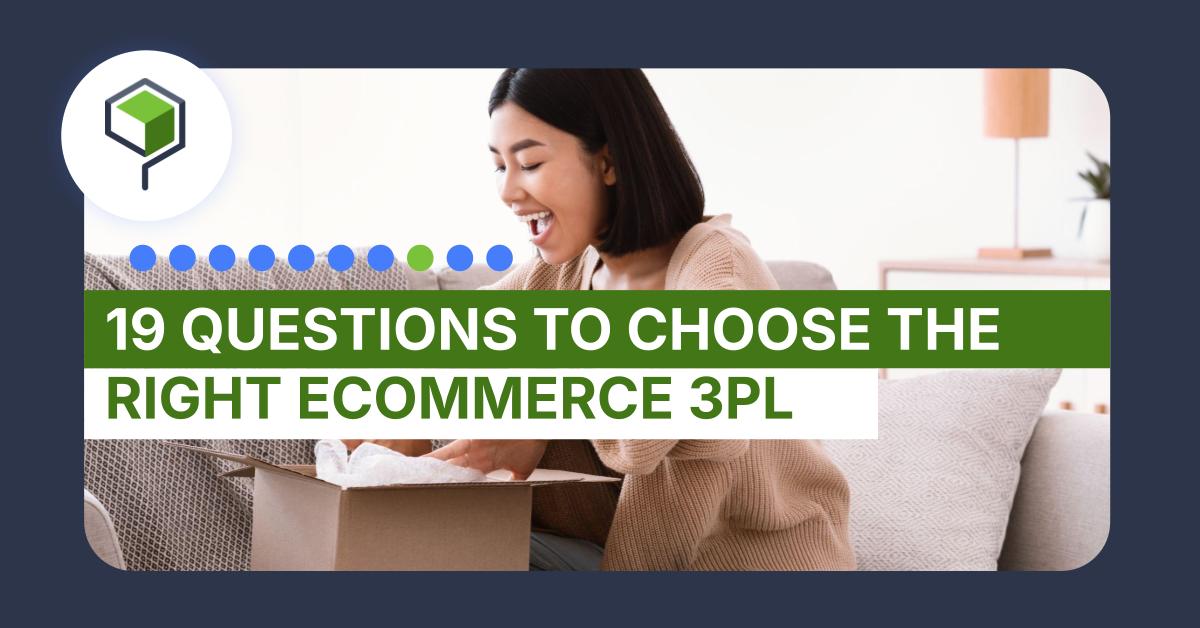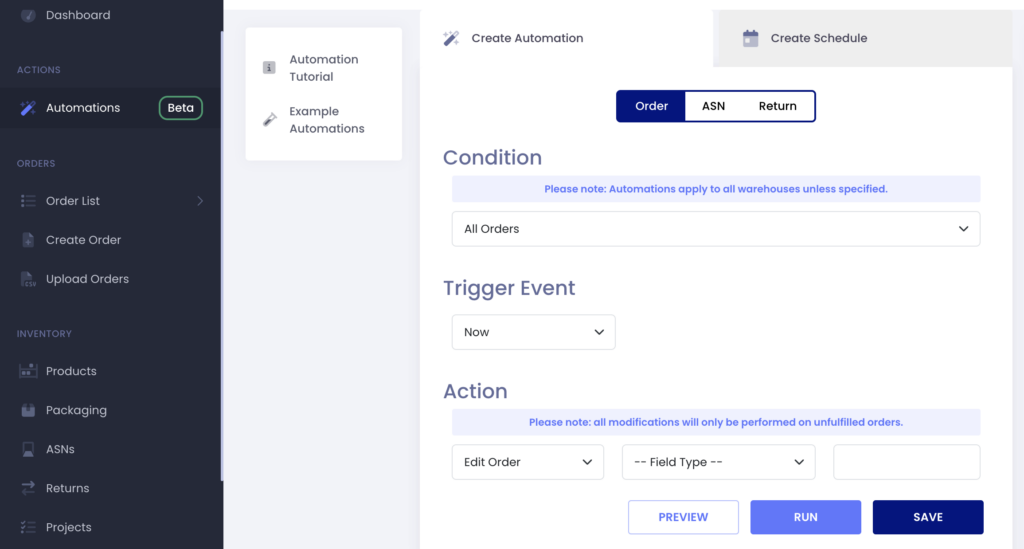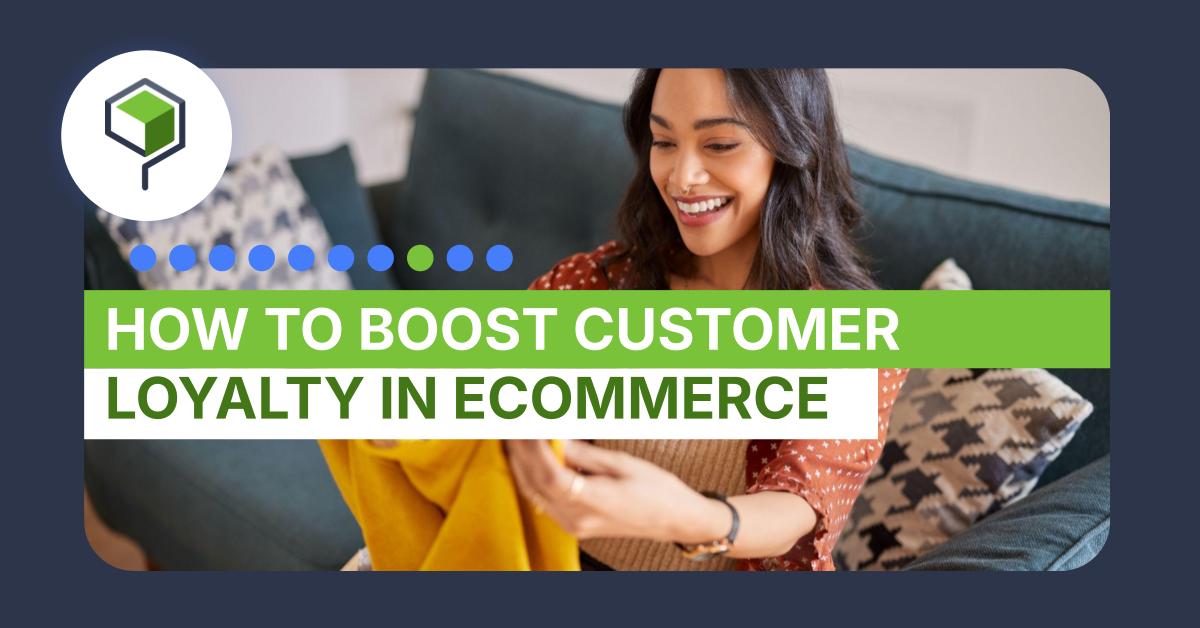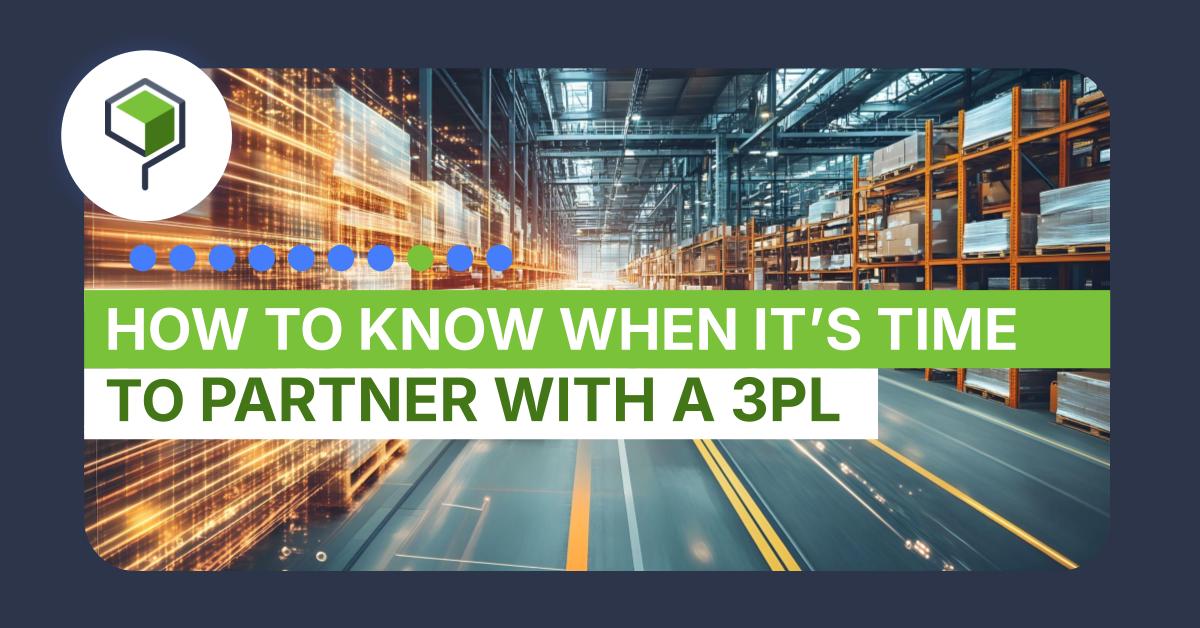19 Questions to Choose the Right Ecommerce 3PL

Growing an ecommerce business is no easy feat.
When your small but mighty team juggles everything from marketing to product development to inventory management, ecommerce fulfillment can quickly become a bottleneck. After all, it takes a number of moving parts to get products picked, packed, and shipped successfully.
This is where the right third-party logistics (3PL) partner can transform your operations—and your business. For scaling brands, the right fulfillment partner won’t just move products from A to B. They’ll deliver seamless customer experiences, optimize costs, and focus on future growth.
But, how can you be sure your fulfillment partner is the perfect fit? We’ve got you covered with 19 questions to ask your ecommerce 3PL.
1. What types of products do you specialize in?
Not every product is the same. And not every 3PL is equipped to handle all types of products. For example, for fragile items, brands will want to ensure their 3PL has experience optimizing packaging for shipping protection. Similarly, brands with temperature-sensitive or time-sensitive products will need to look for lot-control capabilities or temperature-control capabilities. Your ecommerce 3PL should be able to handle your unique inventory with the utmost care.
2. What technology integrations do you have?
Consumers want a seamless end-to-end shopping journey, something only made possible with technology integrations. Your 3PL’s technology should be able to talk with your current tech stack so that your orders are always flowing, without the extra hassle. Whether you’re selling on Shopify, WooCommerce, or another platform, look for fulfillment technology that integrates seamlessly with ERPs, return platforms, multiple sales channels, shopping carts, and third-party marketplaces.
3. What’s your carrier network like?
Shipping flexibility is a must. A strong network of carriers enables brands to secure competitive rates and adapt to customer demands. Look for an ecommerce 3PL who works with all major carriers, and who has international shipping capabilities as well.
Pro tip: Look for a partner with shipping rate software to balance cost, speed, and reliability. ShippingTree’s rate shopping software enables merchants to set up custom rules and parameters, blacklist carriers or shipping methods, and map shipping methods according to their online store.
4. What type of reporting capabilities do you offer?
Access to real-time data is essential for monitoring fulfillment performance, inventory levels, and shipping costs. Your third-party logistics partner should have fulfillment technology that gives you direct visibility into everything happening in the warehouse. Plus, your 3PL should have robust reporting features, dashboard accessibility, and custom analytics options so you can take control of how you’d like to see your data.
ShippingTree’s new Automations feature enables retailers to set up automated reports at whatever cadence they’d like. Pull inventory snapshots or order/shipping status report at a daily, weekly, monthly, or yearly cadence.

5. Do you provide value-added services?
The most successful ecommerce brands continuously add value to their customer’s shopping journey, and they’re likely working with a fulfillment partner that offers a full suite of value-added services. Extras like custom packaging, kitting, gift messaging, or subscription box assembly are all projects that your 3PL should be able to execute flawlessly.
If you’re looking to add thank you notes, marketing inserts, product bundles, or kitting into your fulfillment strategy, you’ll want to ensure your 3PL is up for the challenge–and ideally has technology that makes the whole process easier.
ShippingTree’s user-friendly interface allows brands to create ‘projects’ like kitting, bundling, and branded packaging. From complex VIP kits to simple notes, brands need only to add their project to the platform, set up promo rules, and identify SKUs, and our fulfillment team will take care of the rest.
6. What does your onboarding process look like?
The hard part isn’t over once you’ve chosen your new 3PL. Getting your inventory into your fulfillment partners’ warehouse and having your supply chain management up and running smoothly is a huge undertaking. Without the proper care and attention, brands are at risk of having more downtime than they planned for when making the switch.
The right 3PL will have a proven process of onboarding that ensures minimal disruption to your operations–one that includes a timeline overview, key milestones, and direct points of contact and support provided during implementation.
7. Do you offer 2-day delivery?
Customer expectations for speedy delivery are stronger than ever before. Ecommerce brands competing with the likes of Amazon will want to offer 2-day delivery to keep up with expectations for fast fulfillment. Ask your future 3PL how they achieve quick delivery—whether through distributed inventory and multi-node fulfillment or expedited shipping options.
Pro-tip: During the proposal process, your 3PL should be able to run a location analysis for you to ensure which fulfillment center makes the most sense for your business and delivery time requirements.
8. How do you process returns?
In a perfect world, there wouldn’t be any ecommerce returns. The good news is that returns present brands with an opportunity to strengthen trust and add more value to the customer experience (as long as they’re done properly!) Your 3PL should offer returns management as part of their logistics services, ideally integrating with top returns management platforms like Loop or ReturnGo.
When asking your partner about their reverse logistics capabilities, ensure they clarify the return handling process, restocking fees, and integration with your current return platform.
9. What are your contract terms?
Not every 3PL contract is the same. It’s important to understand the length of time your third-party logistics provider expects you to commit as well as any termination clauses. Plus, you’ll want to know that your 3PL is committed to continuous improvement, service level agreements, and details like shrinkage allowance. Remember, your needs will likely change as your business grows, so you’ll want to make sure that your 3PL can continue to meet you where you’re at.
10. Do you have a minimum monthly order volume?
While you’ll have plenty of questions for your 3PL, your 3PL may have some questions for you…including your monthly order volume. For larger 3PL companies, a minimum order volume is typically put in place to ensure the customers they onboard are going to be profitable and worth the time and space.
When on the search for a 3PL, ensure their order minimums align with your business needs and growth trajectory. Even better, provide your forecasted demand for the next 12 months to ensure your 3PL can accommodate.
11. Where are your warehouses located?
Location, location, location! One of the most important considerations of a logistics operation is where warehouses are located. Strategically located fulfillment centers can reduce shipping costs and transit times–a win for both your business and your customers. Look for a 3PL with a larger, nationwide network, as they’ll have more options when it comes to distributing inventory and leveraging a multi-node fulfillment strategy.
12. How does your pricing work?
If a 3PL’s pricing is too good to be true, it likely is. While 3PL fulfillment pricing structures can vary, it’s not cheap to outsource fulfillment to a reputable logistics company. While a high price tag could deter you from moving, it’s important to remember that a good 3PL can help you optimize your entire supply chain, scale your brand, and ultimately drive more revenue.
When asking a 3PL about their pricing, ensure they are being clear with how they’re getting to a certain cost per order. Ask them to clarify costs related to storage, picking and packing, shipping, and value-added services.
13. How do you handle spikes in demand?
Ecommerce sales fluctuate, especially during peak seasons. While many brands typically have a sense of when demand will increase throughout the year, unforeseen spikes can occur at any point in time, especially in a time wrought with social media, influencers, and going viral. While unexpected sales volume is a good thing, it can take a very wrong turn if your fulfillment partner is not able to keep up with your orders.
It’s vital to ask your third-party logistics company about the resources and technology in place to handle order surges efficiently. You’ll want to understand how they’ve been flexible in the past when it comes to increased order volume, and you might even want to speak to a reference who can verify an experience.
14. Do you provide real-time order and inventory data?
Real-time order and inventory tracking is an absolute must for brands that want to leverage data to make better business decisions.
In ecommerce, things tend to change pretty quickly. One week a certain product might be in, and the next? Out. If a brand isn’t up-to-date on its inventory and orders, it runs the risk of stockouts, dead stock, and the age-old question… Where is my order? (WISMO)
Ensure your 3PL’s technology is more than just fancy marketing. Ask for a live demo of the technology to get a feel for the user interface, dashboard, automation features, reporting capabilities, and more.
15. How secure are your operations?
Whether you’re selling high-value items or cost-friendly products, you’ll want to ensure your inventory is stored safely and securely, reducing the chance of lost or damaged items. Your fulfillment partner should have strong security measures in place, including surveillance, inventory tracking, and access control to protect your products.
Your partner should be secure not only physically, but digitally as well. When you work with a 3PL, they have access to your customers’ sensitive information. Understanding your partner’s cyber-security protocols and data protection standards is a massive factor in choosing the right 3PL.
16. How do you handle errors?
Mistakes happen. What matters is how they’re resolved. There are a dozen places throughout the order fulfillment process where things can go very wrong, from packing an incorrect item to forgetting an item completely to sending something off damaged. If a 3PL doesn’t have a solid process for handling common errors, it’s likely a red flag. When about their process for order errors, mispicks, or lost shipments, and how they handle issue resolution and customer support.
17. What are your standard SLAs?
Every third-party logistics provider has a set of standard service level agreements (SLAs) that define performance expectations for fulfillment speed, accuracy, and response times. This includes:
- Dock-to-stock
- Order Accuracy
- Fulfillment Time
- Shrinkage Allowance
These metrics play a huge role in ensuring your fulfillment operations maximize your customer experience. Ensure your 3PL’s SLAs align with your brand’s standards.
18. Can you share client testimonials, case studies, or references?
Have you ever wanted to try a new restaurant and asked your group of friends if anyone’s been before? You may have asked about the service, selection, and general vibes. With a new 3PL provider, it’s like this…multiplied.
You’ll want to understand exactly how it is to work with a new provider, including what their warehouse space looks like, how they provide customer support, and which shipping services they offer. Reputable 3PLs should be able to provide references or case studies demonstrating their success with brands similar to yours.
Pro-tip: Ask for a site visit to see a warehouse in action. This gives you a good sense of how things run at the ground level. If the warehouse seems unorganized or dirty, with products strewn about, it’s a major red flag.
19. How will you scale with my brand?
Growth is the goal, right? Knowing where your brand is headed can be a major factor when it comes to choosing the right 3PL. For example, if expanding into an international market or breaking into retail is on your roadmap, you’ll want to work with a partner who already has the expertise to handle those projects. Look for a partner who works with ecommerce companies that are doing what you’d like to be doing now and in the future.
Choosing the right partner
Choosing the right ecommerce 3PL isn’t just about outsourcing fulfillment services. It’s about finding a partner who can act as an extension of your brand, helping you grow, scale, and succeed in a notoriously difficult industry. It’s a huge decision for any brand, no matter how many orders you ship out each day.
Finding a partner with the perfect balance between operational expertise and advanced technology is a surefire way to maximize customer satisfaction and minimize errors. By asking the questions above, you’ll be one step closer to finding the perfect fit to enhance your brand’s ecommerce fulfillment.



